IS YOUR CERTIFIED DIAMOND CRACKED OR BROKEN?
WAS YOUR DIAMOND DAMAGED AFTER IT WAS CERTIFIED?
This post contains affiliate links. If you use these links to buy something I may earn a commission. Thanks! As an Amazon Associate I also earn from qualifying purchases.
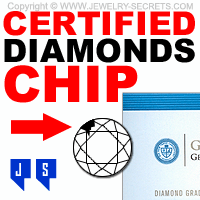
Certified GOOD?
Just because a Diamond is Certified, doesn’t mean it’s Good!
I’ve already talked about how Certified Diamonds can be Low Quality (GIA Grades BAD Diamonds), and the Fact of the matter is, GIA will Grade any Diamond you send them. So being Certified doesn’t make a Diamond “Good Quality“, it just shows you what the Quality of Diamond is; Good or Bad.
But what Happens if that Diamond is Damaged after it’s been Certified?
Diamonds get Chipped, Nicked, Fractured or Broken all the time. And if your Stone was Certified before that happened (Pre-Damage), it wouldn’t Reflect on the Report, Plot or Certificate. The Certificate would make it seem like the Diamond was in Perfect Condition…
Until you Scope it!
That’s when things take a Different Turn. Microscoping a Diamond under 10x Power (what a Diamond is Graded with) will show you an Entirely New Viewpoint. And Not a Pretty one…
Let’s look at some Examples on why Microscoping Diamonds (with a Jeweler’s Loupe or a Microscope) are so Important…
Example One
Ralph, the Jewelry Salesperson, is Excited about showing off a Brand New Diamond that the Jewelry Store just got in. Ralph Locks the Diamond in the Tweezers and puts the Diamond under the Microscope. Suddenly the Diamond Pops out of the Tweezers, goes Flying across the Room and Bounces on the Floor.
Embarrassed, Ralph picks the Diamond up, sets it back under the Scope for Mary and Joe to see.
Everything looks Great, but Wait…
Mary sees a Tiny Chip on the Right Side of the Diamond… “Isn’t this Diamond supposed to be Clean?” She says.
What they don’t know is that the Tweezers Chipped the Diamond when the Diamond Popped out of its Secure Grip. One has to be Careful when Holding and Clamping Diamonds because, as we can see, even Diamond Tweezers can Chip a Diamond if you’re Not Cautious enough. One Chip and the Quality of the Diamond and the Value of the Diamond is Lowered!
Example Two
Henry spent an Entire Week going to all the Local Jewelry Stores, hunting around for the Best Quality and the Best Price!
The Loose Certified Diamond he choose was Exquisite: VVS1, F, Excellent Cut… Stunning in every way. He picked out a Classic Tiffany Style Engagement Ring and had them set it so he could pick it up after Work.
Henry gave the Ring to his Fiancee with a Huge Smile that Night. She was Ecstatic about the Ring and his Proposal, but upon Closer Inspection she saw that there was a Chip on the Side of the Girdle…
How can this be?
Henry was Extremely Careful when choosing Diamonds. He learned about Quality, selected the Diamond and Scoped and Compared the Stones. All was Perfect! It was supposed to be one of the Best Diamonds that Money Could Buy… But now it’s Damaged and Ugly…
What Henry doesn’t know is that the Jeweler Accidentally Chipped the Diamond upon Setting it into the Engagement Ring. If Henry had taken the time to Scope the Diamond when he Picked it up from the Jeweler, he would have caught this Sightly Error.
Now it’s too Late!
Example Three
Elizabeth had her New Diamond Ring for just 2 Weeks. She takes it to the Jewelry Store because she Hit her Ring on the Filing Cabinet at Work and wanted them to check it out.
The Jeweler Checks out the Diamond and tells her that the Stone is now Chipped by the Prong.
“But it’s only 2 Weeks Old!” she says Devastated.
“It only takes one Good Strike to Damage a Diamond” the Jeweler tells her.
She’s upset with herself and doesn’t know how to Break this News to her Boyfriend.
What she doesn’t know is that she didn’t Chip the Stone… It was Chipped when they Bought it, but the Jeweler Hid the Chip underneath a Prong.
Out of Sight, out of Mind!
That’s why you should Never Buy Diamonds, especially Certified Diamonds, already Set in a Mounting. Buy them Loose. That way you can see the Diamond from every Angle, every Facet, and can check it for Chips or Damage. After you Buy the Diamond you can have it set in the Mounting of your Choice.
Elizabeth thinks she’s to Blame, but really it’s the Jeweler pulling an Unscrupulous Scam.
Example Four
Suzie bought a Laser Inscribed Certified Diamond and took it into a small Goldsmith to have the Ring Sized. She picks up the Ring 1/2 hour later and thinks that the Diamond looks Funny. ‘Maybe it’s just because it’s Clean’, she thinks to herself.
She takes the Diamond home and shows her Fiance, who then gets out his Loupe to View the Inscription of the Stone. Low and behold, there is None! Their Diamond was Switched! No wonder why it looked so different.
“Did you tell them it was Certified and Inscribed?” he asks her.
“No,” She says “I didn’t think I had too. I was too Excited to get my Ring Fixed!”
They go back to the Jewelry Store with the Ring and Explain the Situation. “This is NOT our Diamond,” he says “You Switched our Stone!“
The Jeweler says “We never Switched any Stones. She never said it was Certified or Inscribed. I don’t see any Inscription on this Stone. How do I know you didn’t Swap it out before you brought it here and are trying to Frame me?”
This is a Great Scenario, because it happens way too often. There is no way to Prove one way or the other who is Right and who is Wrong.
Every day, people are trying to Frame and Blame others…
What can you do?
Be Prepared and Cautious.
If you have a Certified Diamond and it’s Laser Inscribed, take it to a Reputable Jeweler and tell them this. Scope your Diamond and View the Inscription with them when you Drop your Stone off. This way they know that you can Identify your Diamond. It will keep them from Switching it. It’s the Best Way to Protect yourself.
Scope your Stone when you Drop it off. Have them Write the Inscription Number right on the Repair Slip. Scope your Stone again when you get it back. Compare the Numbers. Make sure they Match!
If you are able to Identify your Stone and the Jeweler knows this, it will keep them Honest and keep them from Switching it out for a Lower Quality Diamond.
Example Five
Alan goes to a local Jewelry Store to Buy a Certified Diamond. The Jeweler says he just got in a Beautiful Diamond and shows him a 1.21 Carat, Brilliant Cut, VS1 Clarity, D Color Diamond… With a Price that Knocks his Socks off.
Alan loves it. He looks at the Certificate, loves the Clarity and Color and Price. SOLD! He Buys it Instantly and has it Set in a Pave Set Mounting.
His Fiancee puts the Ring on her Finger that Night and Feels a Rough Spot on the Diamond’s Edge.
Alan takes it back to the Jeweler and shows them the spot. “The Stone is Now Chipped” the Jeweler says “How long did your Fiancee Wear it?“
“Just a Few Hours” Alan says.
“A Few Hours is all it takes to Damage a Diamond. Your Fiancee doesn’t have Good Luck!”
What Alan doesn’t know is that the Diamond was already Chipped upon Purchase. If he had Viewed the Diamond under a Scope he would have seen the Chip plain as day. But he was too Interested in what the Certificate said and what the Quality was…
One thing that should have Tipped Alan off was the Date on the Report. It was Certified over Ten Years ago. More than likely that means that this Stone was already Worn by someone else, and somewhere along the line the Diamond was Traded in, Returned, Repossessed, or Exchanged. The Chip more than likely came from the Previous Owner.
The Jeweler may not have known about the Chip, but chances are he did. Jewelers don’t Buy Diamonds unless they Scope them. They like to Double Check the Quality….
But that’s not the Jeweler’s Problem anymore. It’s Yours!
The only one to Blame is Alan for not taking the time to View the Diamond under a Scope. Older Diamonds, Antique Diamonds, Diamonds Traded in, Exchanged or Returned often Show Signs of Wear and Tear. Edges can get Chipped. Facets Worn Down. Girdles Bearded (Small Nicks around the Outside of the Stone). The Certificate was Dated many Years ago. Any Damage after that Date will Not Show on the Certificate or Diamond Plot.
Chips affect Clarity
Chips, Nicks, Fractures, and Breaks are all different types of Internal and External Imperfections or Inclusions. They Affect the Clarity of a Stone. If a Diamond has a Chip in it, it will bring the Clarity and Value down!
It can take a VVS1 Diamond worth $10,500 down to a I1 Clarity Diamond worth only $2,995.
That’s a HUGE Difference!
So if the Diamond is still being Sold as a VVS Stone (what it used to be) and it’s now an I1 Clarity Diamond, you could be Paying Thousands of Dollars more for that Damaged Diamond…
And you’d never know it!
That is, until you Microscope the Diamond.
YOU MUST SCOPE THE DIAMOND!
Scope the Diamond every time you hand it over to a Jeweler, and when you get it back, Scope it Again. Even if you know the Jeweler and are Friends with them… Scope the Stone. Accidents happen to Everyone! It’s for your own Protection AND the Jewelers.
Get in the Habit of saying “Can I View this under a Scope Please?”
It only takes a Couple of Minutes, but it could literally Save you Thousands! Don’t Hesitate to Speak up!
Example Six
Jennifer Buys a Certified Diamond that’s supposed to be an SI1 Clarity, G Colored Diamond.
She takes it to a local Appraiser who looks at the Diamond and the Report and shakes his head. “This Diamond doesn’t belong with this Certificate“. Turns out the Diamond is an I1 Clarity Diamond instead.
Point is, if Jennifer would have Viewed the Inclusions under the Scope upon Purchase, she would have seen the Inclusions didn’t Match up with the Diamond Plot (Map of Inclusions). One of the Jewelry Store’s Employees may have Accidentally put the Diamond back in the Wrong Envelope. It’s an Innocent enough Mistake, but now Jennifer has a much Lower Quality Diamond and has really Paid the Price.
Point is: Microscope the Diamond to see what it really is.
Tips and Tricks
1) Always Buy your Diamonds Loose!
2) Always Buy Certified Diamonds!
3) Scope the Diamond from all Angles, Sides and even Upside Down.
4) Scope the Diamond when you Pick it up from the Jewelers.
5) Scope the Diamond when you Take it In for any Repairs, Sizings or Polishings.
6) Have the Diamond Checked for Chips and Cracks a Couple of Times a Year.
7) Have your Diamond Insured and Covered if it’s Lost, Stolen, or Chipped!
You never know what will happen in life. Protect yourself, Protect your Diamond.
All Diamonds can Chip
Certified or Not, all it takes is a Good Whack with the Right Amount of Force at the Right Angle. You can Chip or Crack your Diamond for Life!
And if you notice the Chip after the Fact, you’ll never know if it was YOU that Chipped the Stone, or the Jeweler.
That’s why you have to take it upon yourself to Scope the Diamond Before you Leave the Jewelry Store. You can’t do it Later when you get it Home. You have to do it NOW, Before you Walk out that Door.
Scope the Stone.
Check for Chips.
You only have one Chance to Catch it. Otherwise it’s your Word against Theirs. Don’t put yourself in this Position.
What can you Do?
If your Diamond is Chipped or Cracked, it will no doubt Lower the Value of your Diamond. It would be a Good Idea to get the Diamond Reappraised and Readjusted with your Insurance Company so you’re Not Paying for a More Expensive Diamond (maybe your Insurance Company will Cover the Cost of Replacing it? – Check your Policy!).
Diamonds can always be Traded in (even if it is Chipped), and it can also be Recut into a Slightly Smaller Carat Weight, depending on the Size of the Chip and the amount of Damage done.
Jewelers can Advise you on the best way to Proceed with your Diamond, but the thing to Learn and Remember here is:
Scope your Diamond!
Scope it Often!
Scope it Today!
You’ll be Glad you did!
Cheers! :)


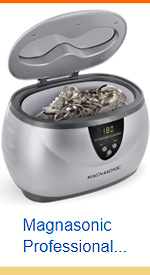

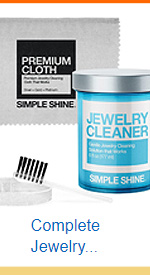
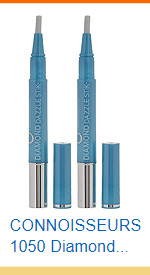
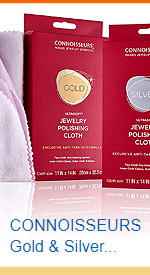
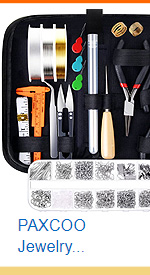
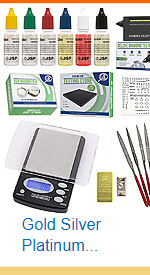
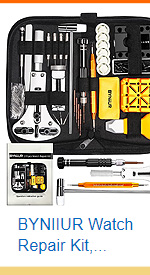
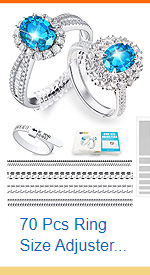
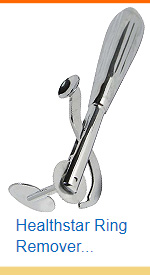
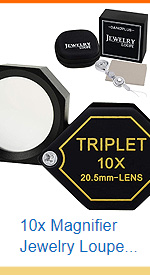
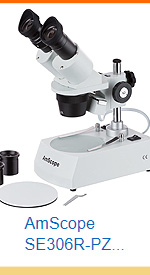
Leave a comment